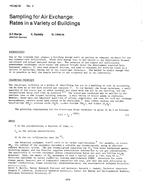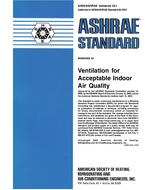Over the past few years certain trends in the design of industrial facilities have become evident. Environment, both in-plant and external, and conservation of energy have taken on a new importance. Employee safety and comfort are the watchwords in industry. The young industrial employee seeks environments which are just right: not too cold, not too hot, not too dirty and not too noisy.
He will not suffer the unsafe, uncomfortable, or unrewarding working conditions of his father and grandfather. To meet the challange, employers, with the government and unions acting as effective prods, are making widescale changes, particularly in the fields of heating, air conditioning and ventilation. Compliance with OSHA requirements has sparked other health and safety changes.
In response to consumer demands for more products of higher quality at a low cost industrial standards have been raised and automatic equipment used to achieve high volume production. These changes create environmental demands that did not exist a few years ago, natural ventilation, although satisfactory for the tall monitor roof, narrower buildings of years past, cannot solve the problem of controlling the employee’s working conditions in the modern plant.
The modern industrial plant with its large area and flat roof requires mechanical ventilation as a minimum and spot cooling or air conditioning as an optimum condition.
To keep pace industrial employers are installing better ventilating and heating systems in non-air conditioned facilities, old facilities are being upgraded to meet modern environmental standards, make up air systems are being added, When these older facilities are abandoned it is not unusual to see them replaced by air conditioned facilities.
Citation: Symposium, ASHRAE Transactions, Volume 80, Part 1, Los Angeles, CA
Product Details
- Published:
- 1974
- Number of Pages:
- 5
- File Size:
- 1 file , 410 KB
- Product Code(s):
- D-LA-74-01-1


